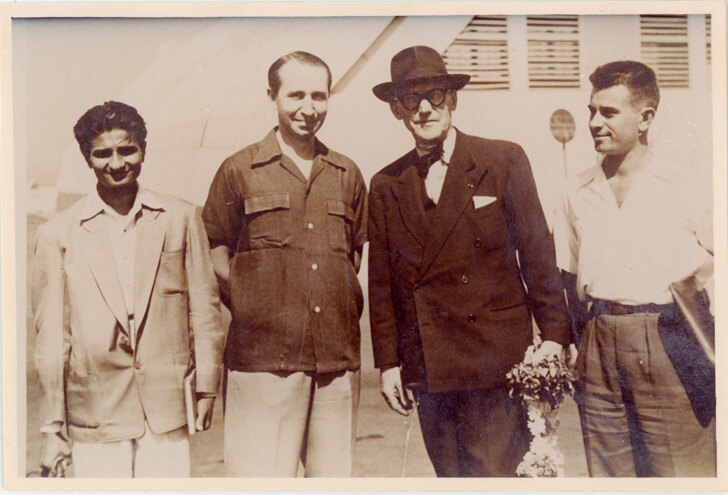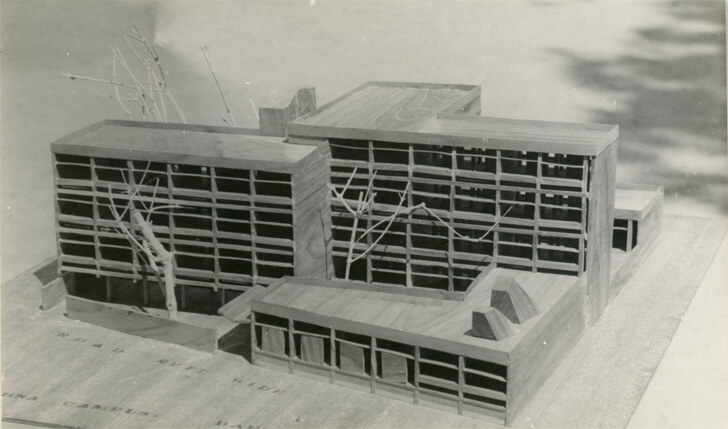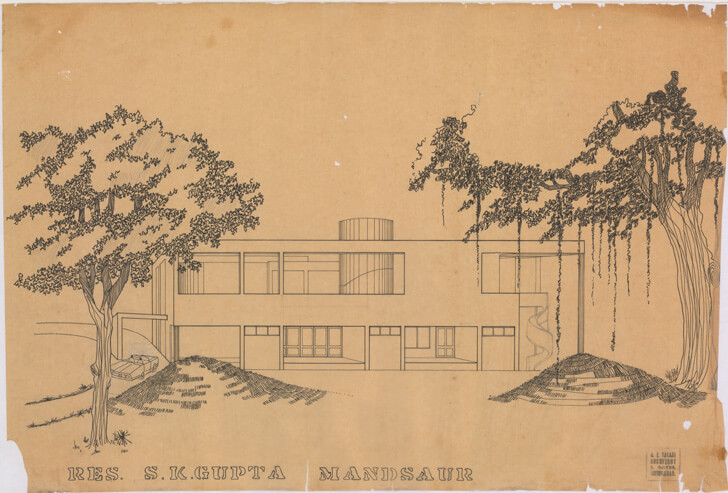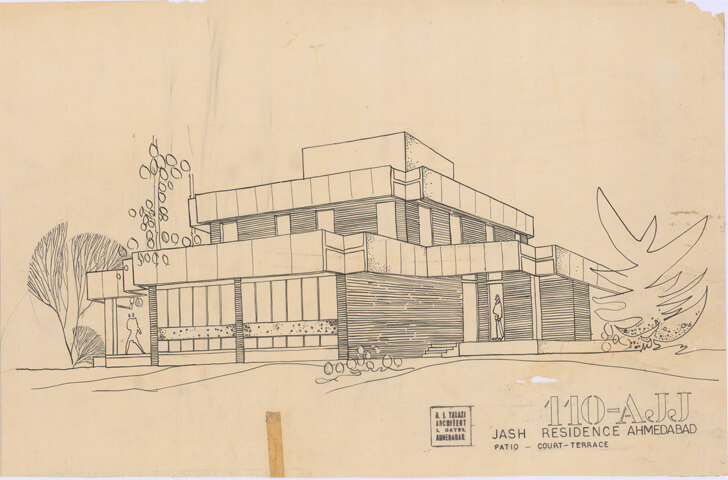By FinchD
Photography: Copyrights CEPT Archives, Ahmedabad
Read Time: 2 mins
On view from 11th August to 3rd September 2016, CEPT
Archives presents the works of Ar. Arvind Talati, emblematic of the work of inconspicuous
patrons of Indian Modern Architecture.
Curated by Prof Srivathsan, Academic Director at CEPT University,
Ahmedabad, the exhibition inquires the ambiguity of modern architecture in
India in the period following independence.
 |
| Talati with Corbusier in Bombay, 1953 |
Following an introduction on Talati’s academic and early professional
background, the exhibition displays the drawings of his works in three distinct
phases, across three decades of his architectural practice starting from 1958.
 |
| Model of Jeevan Sadhana School, Baroda, 1963 |
 |
| Master Plan of IPCL Township, Baroda, 1970 |
 |
| Bank of India, Ahmedabad, 1965 |
The first phase presents an eclectic range of projects: from residential,
industrial, and institutional to public infrastructure, which helped him
establish his architectural practice.
Starting from 1968, an emphasis on housing projects is observed, with an
aim to create low-cost housing with the aid of modern technology. Notwithstanding
his affiliation with Le Corbusier over a period of four years, Talati has a
distinct style of designing, which stems from his appreciation of the
indigenous culture, climate and economy. The elements thus seen are courtyards
and self-invented shading devices, with condensed spaces between parallel
walls.
 |
| S. K. Gupta House, Mansaur, 1974 |
 |
| Jash House, Ahmedabad, 1972 |
The last phase observes a shift in style, where Talati has perhaps
fallen prey to the then popular ideology of Critical Regionalism, leading to an
almost post-modernist, referential approach in his designs.
Acknowledging the role of the architect as a “bearer of tradition”, Dr
Bimal Patel (President, CEPT University) identifies the archives as a means to
make available to students and scholars, “proximate examples” of a unique
architectural style. The exhibition therefore not only bridges the historic gap
in Indian Modern Architecture with Talati as a case in point, but also collates
information for future generations of architects.
Looking closer, one can see that the exhibition
attempts to fill such a gap in history, where at one level, it is a valuable
archival endeavour; while, at another, it’s an effort to expand the
understanding of modern architecture in India – with due diligence to the context,
climate and other solutions significant to places and people.



Awesome Designs!!!!
ReplyDelete